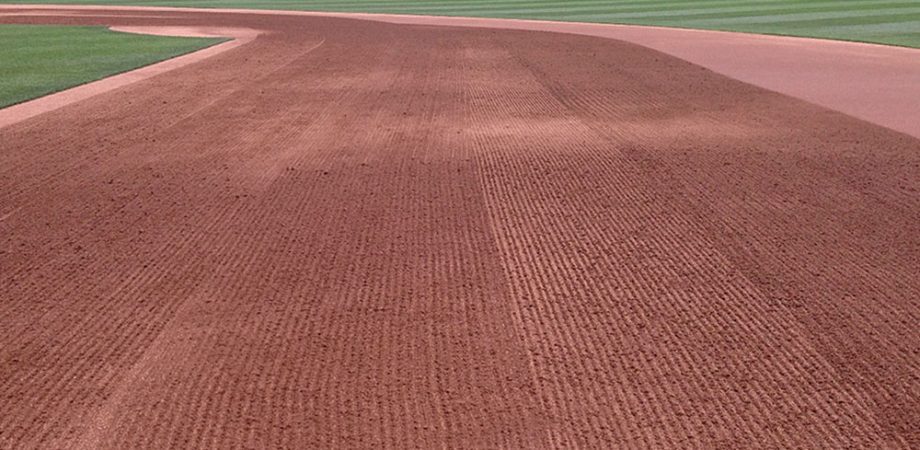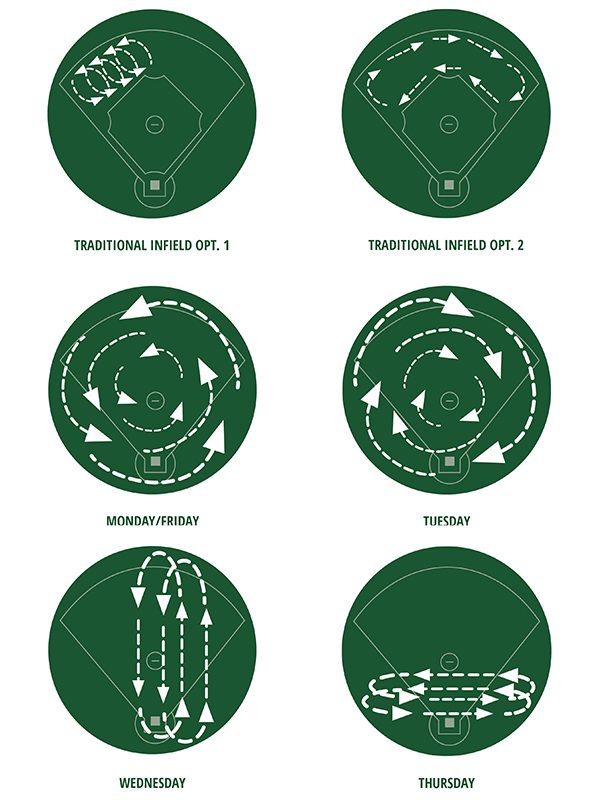Ensure Infield Playability by Dragging the Infield

Maintaining a sports field requires countless hours of moisture management, edging, mowing, and more. A significant factor in maintaining an infield is managing the infield mix and the grade of the infield. The grade is maintained by regularly dragging the infield. When infields are not regularly dragged, it can cause many safety concerns for athletes—especially when the infield is uneven, flooded, or even too dry.
Why is dragging the infield important?
- If the infield is not regularly dragged and adequately maintained, it can lead to various safety concerns for athletes.
- Poor infield management can lead to flooding and erosion, which makes playing conditions more dangerous for athletes.
- If there are low points in the infield, there is a possibility of flooding, leading players to slip and injure their ankles and knees.
What happens if the infield is uneven?
- The infield can cause tripping or unsteady footing during games.
- Infielders may experience a bad or inconsistent ball hop.
- Water can pond on the infield and potentially lead to the cancellation of games.
How do you properly drag an infield?
- Always pull the bases and put base plugs in the anchors before dragging the infield. If the bases are not pulled, the equipment can catch the base, damaging the base and even bending the screen drag.
- Do not drag the infield too quickly. Doing so can lead to infield material being thrown into the edges, creating low areas in the infield and drastic lips between the infield and outfield.
- Always use the correct equipment. Dragging the infield with heavy equipment, such as a vehicle, can lead to rutting that will negatively affect the grade of the infield.
- Always lift the drag before leaving the infield. Not lifting the drag before leaving the infield puts the clay material from the infield mix into the root zone of the outfield, leading to drainage and moisture management issues because the roots have to fight the clay material for water.
- Be sure to change directions when you drag the skinned infield. Consistently dragging in the same pattern can cause material to migrate and create a bowl effect on an infield.
Skinned Infield Grooming Chart

Dragging the infield is essential to maintain a grade between 0.5% and 1%, which is necessary to achieve ideal surface drainage on the infield. If the grade of the infield is above 1%, the infield mix will erode and break down more quickly, leading to low areas in the infield that will collect water easily. Where the grass in the outfield typically drains at a rate of four to six inches an hour, the infield skin, when compacted and graded correctly, typically drains at about 0.05 inches an hour. That is practically nothing, so it is essential for there to be proper surface drainage to ensure quicker surface drainage and turnaround after it rains.
Another critical factor for infield drainage and turnaround time after it rains is the conditioner used on the infield. Conditioner serves two purposes for the infield. It acts like a mulch, keeping the sun and wind off the infield mix so it can hold moisture better. In this way, it is also sunscreen for the infield mix, ensuring the infield mix does not dry up. The conditioner also helps protect the infield when it rains, allowing the rain to dry up more quickly. Dragging the infield maintains the quality of the conditioner and makes sure it is not too compact.
Reach out to your Advanced Turf sales representative for more information about dragging an infield.







